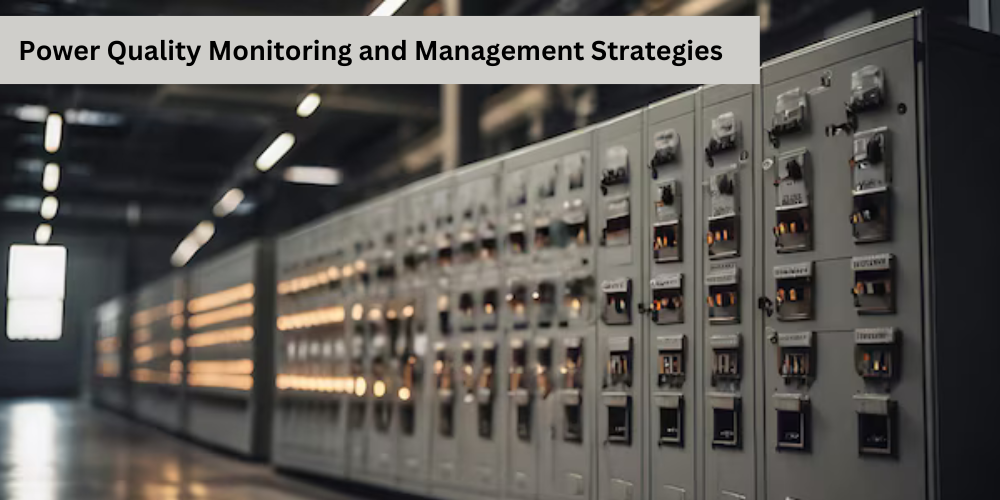Role of Power Quality Monitoring and Management Strategies
In the moving world of industry today maintaining power quality is important, for keeping electrical systems running smoothly. If power quality is poor it can cause equipment to break down result in downtime and lead to setbacks. In this blog we will explore into why monitoring and managing power quality’s crucial the types of equipment used for this purpose and how these approaches can be advantageous, for sectors.
Understanding Power Quality
Power quality refers to the characteristics of electrical power that allow it to function effectively in various applications. Below key parameters affecting power quality include:
- Voltage Sags and Swells: Sudden decreases (sags) or increases (swells) in voltage can disrupt operations, leading to equipment damage.
- Harmonics: Distortions in the voltage or current waveforms, often caused by non-linear loads, can result in overheating and inefficiency.
- Flicker: Fluctuations in voltage that cause noticeable changes in lighting levels, affecting both comfort and productivity.
- Transients: Short-duration voltage spikes that can severely damage sensitive electronic equipment.
- Frequency Variations: Deviations from the standard frequency can affect synchronous motors and other critical equipment.
Importance of Power Quality Monitoring
Monitoring power quality is essential for several reasons:
- Improved Equipment Reliability: Consistent power quality enhances the lifespan and performance of machinery and electronic devices.
- Operational Efficiency: Monitoring helps identify inefficiencies in the system, leading to optimized performance and energy savings.
- Downtime Prevention: Early detection of power quality issues can prevent unexpected failures and costly repairs.
Real-world examples highlight the impact of power quality issues. For instance, a manufacturing plant experiencing frequent voltage sags might face production delays and equipment damage, leading to substantial financial losses.
Types of Equipment Uses in Power Quality Monitoring
- Power Quality Analyzers (PQAs): These are essential tools for comprehensive power quality assessment. They measure a wide range of parameters including voltage, current, power factor, harmonics, transients, and more. PQAs can be portable for spot-checks or fixed for continuous monitoring.
- Voltage Monitors: Specifically designed to detect and record voltage disturbances such as swells, sags, and flickers. They help in identifying issues that can affect the performance and longevity of electrical equipment.
- Harmonic Analyzers: These devices focus on measuring harmonic distortions in the electrical system. Harmonic distortion can lead to overheating, equipment malfunction, and energy inefficiency, making harmonic analyzers crucial for maintaining power quality.
- Multifunction Power Meters: These meters provide real-time monitoring of multiple electrical parameters including voltage, current, power, energy consumption, and power factor. They are vital for both immediate diagnostics and long-term energy management.
- Uninterruptible Power Supplies (UPS): Uninterruptible Power Supplies (UPS) are essential devices used in power quality monitoring and management to provide backup power and protect against power disturbances.
Power Quality Management Strategies
Implementing effective power quality management strategies involves several key components:
Implementation of Monitoring Systems
Power quality monitors are essential tools for measuring critical parameters in electrical systems. These devices can be portable for temporary analysis or installed permanently for continuous monitoring. They provide detailed insights into electrical parameters and help identify issues promptly.
Data Analysis and Reporting
Once data is collected, it must be analyzed to identify trends and potential problems. Power quality analysis software allows users to interpret data efficiently, providing actionable insights for improving power quality.
Proactive Measures
To mitigate power quality issues, several strategies can be employed:
- Power Conditioners: These devices stabilize voltage and filter out disturbances, ensuring a cleaner power supply for sensitive equipment.
- Surge Protectors: Equipment designed to protect against voltage spikes, safeguarding electronic devices from potential damage.
- Capacitor Banks: Used for reactive power compensation, these systems improve power factor and reduce energy costs.
Continuous Improvement
Regular assessment of power quality strategies is vital. Implementing feedback mechanisms enables continuous monitoring and adjustment based on real-time data, ensuring optimal performance over time.
How Power Monitoring Systems Can Benefit Commercial Properties
Commercial properties reap substantial benefits from implementing power monitoring systems:
- Increased Tenant Satisfaction: Reliable power supply and optimal energy conditions lead to higher tenant satisfaction and retention rates.
- Operational Cost Savings: By identifying and reducing energy waste, properties can significantly lower their operating expenses.
- Support for Sustainability Initiatives: Monitoring energy use helps properties meet sustainability targets, enhancing their reputation and attractiveness to eco-conscious tenants.
Ready to enhance your power quality and energy efficiency? Invest in advanced power monitoring systems and start optimizing your operations today. Bruce Electric’s comprehensive range of electrical equipment, including Power Conditioners and Surge Protectors, ensures optimal performance and safety. Contact us to discuss your requirements today!
